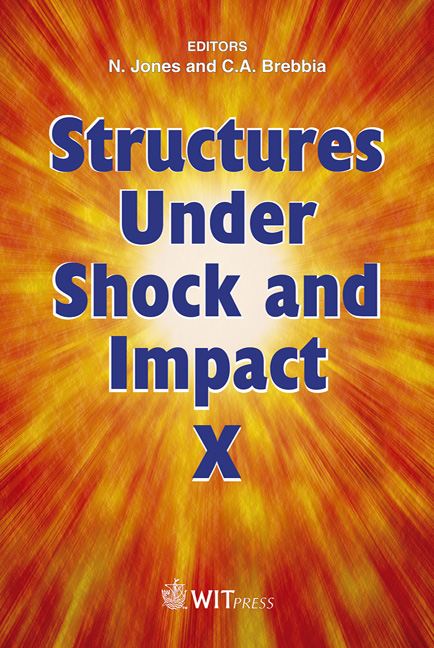Computational Airblast Modelling Of Commercial Explosives
Price
Free (open access)
Transaction
Volume
98
Pages
10
Page Range
45 - 54
Published
2008
Size
418 kb
Paper DOI
10.2495/SU080051
Copyright
WIT Press
Author(s)
B. J. Zapata & D. C. Weggel
Abstract
Two separate blast tests were conducted inside a conventional, unreinforced, brick building scheduled to be demolished. The small cylindrical explosive charges (less than 9 kg each), composed of dynamite sticks bundled together, were placed inside the building and detonated (in separate events) to study the blast resistance of the structure. The pressures generated by the blasts were recorded using a high speed data acquisition system. To better understand the complex pressure loading caused by the blasts for use in structural response modelling, the authors have undertaken a study to computationally model the explosive detonations. Advanced computational modelling is of interest because most tabular and other simplified blast load analysis techniques are inaccurate for the case of a close-in (but outside the detonation products) blast produced by a cylindrical charge. This paper presents the results of two dimensional airblast simulations performed using CTH, a shock physics code written by Sandia National Laboratories. The Jones-Wilkins-Lee (JWL) equation of state data for dynamite available in the literature are reviewed and the equation coefficients are adjusted to reflect the properties of the dynamite used in the tests. CTH simulations are compared to the measured blast pressures and impulses to assess the ability of the existing (adjusted) equation of state data to model currently available commercial dynamite. Keywords: explosives, equation of state, airblast, bomb blast, impact and blast loading characteristics, interaction between computational and experimental results.
Keywords
explosives, equation of state, airblast, bomb blast, impact and blast loading characteristics, interaction between computational and experimental results.





